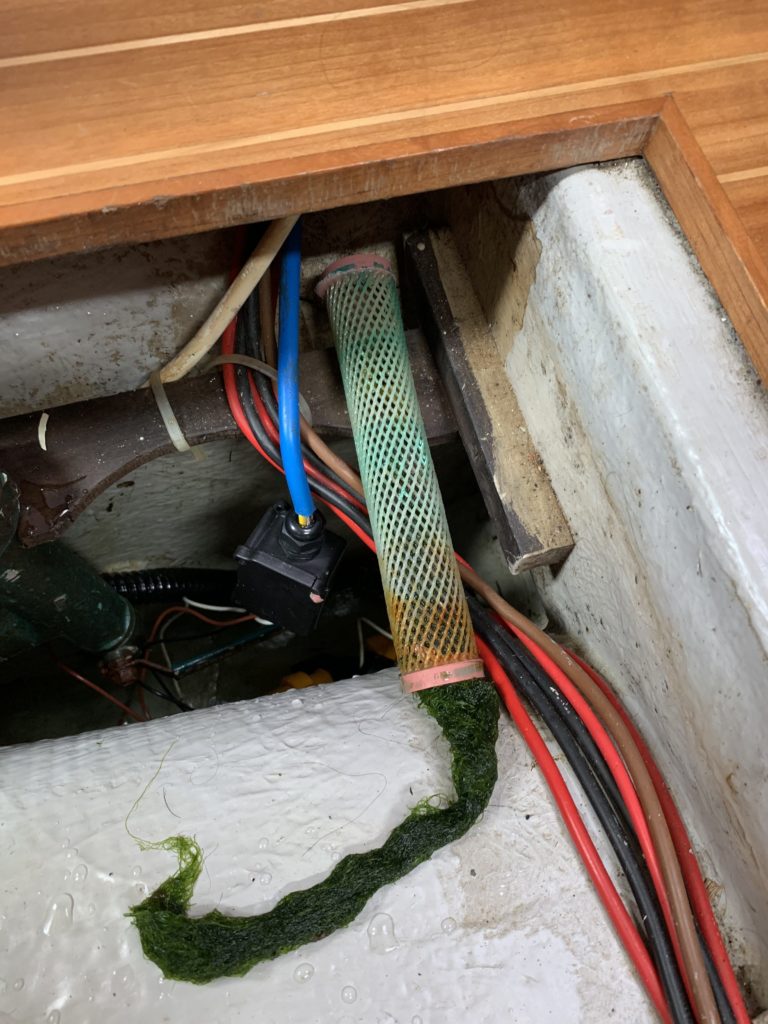With Blue Opal alongside for the week, and the new water pump installed, I figured it was a good time to change the oil and the oil filter. Borrowed the oil vacuum from the club, and started the engine up to warm up the oil.
As I’m pottering around waiting for the engine to warm up, I noticed a change in the sound of the exhaust; no more water coming out. Shut the engine down in a hurry, and opted to change the oil first, then tackle the issue of the raw water.
Oil change was easy, though I did need to ask Denis about the procedure for pulling the oil out – there was no way what I’d extracted was the full amount, and it turned out I’d got the hose so far into the sump that it had hit the bottom and turned upwards and out the other side (and thus sucked air instead). With that sorted, I got about 1.3 or so litres of old oil out of the engine.
Given a Yanmar 3GM30 has a 2.6 litre capacity, I’m a bit short on oil. This might be the explanation for the blue tinged smoke I’ve been seeing at high revs, so the engine may need an overhaul to check that everything is ok. Got the old filter off, with an oil absorbent cloth placed below it to catch anything that leaked, which it did – you’d swear I’d hit Texas Gold.
Oiled up the new filter, screwed it on, and put about 2 litres of clean oil into the system. Threw the decompression levers, and spun the engine a few times to get the oil to move a little bit. Then decided to tackle the lack of cooling water.

Well, there’s your problem, or part of it at least. Blue Opal’s water intake is half way down the keel, so nominally about a metre under the waterline. How she pulled that lot in – well, she’s alongside the pontoon, and there’s a bunch of seaweed trapped…
However, even with that filter cleared, hardly any water was coming through, even with the seacock fully open. The top of the seacock is below the waterline, so opening it is a guaranteed way to flood the boat if the screw cap isn’t on, and at best I was getting a trickle.
Rodding with wire and other assorted items didn’t work; couldn’t get past the 90 degree bend at the bottom of the seacock. Mulled it over with Dad, and decided to try and blow water back down the seacock from the end of the inlet pipe by using a spare bilge pump. Got back from fetching groceries, and had a chat with one of the Sea Scout leaders (who also showed me how to make a shackle in Dyneema today), and he offered to bring down his compressor.
One compressor and line arrived about an hour later, got Brian to come down to control the seacock for me, offered up the cone to the inlet hose, sealed it with my hand, and gave it a burst of compressed air. There was a bit of back-blast, and then massive gurgling and “bloop bloop bloop” noises could be heard. Closed the seacock, took the compressor off, and then checked the seacock by opening it a fraction – back to normal, water came rushing in. Yay!